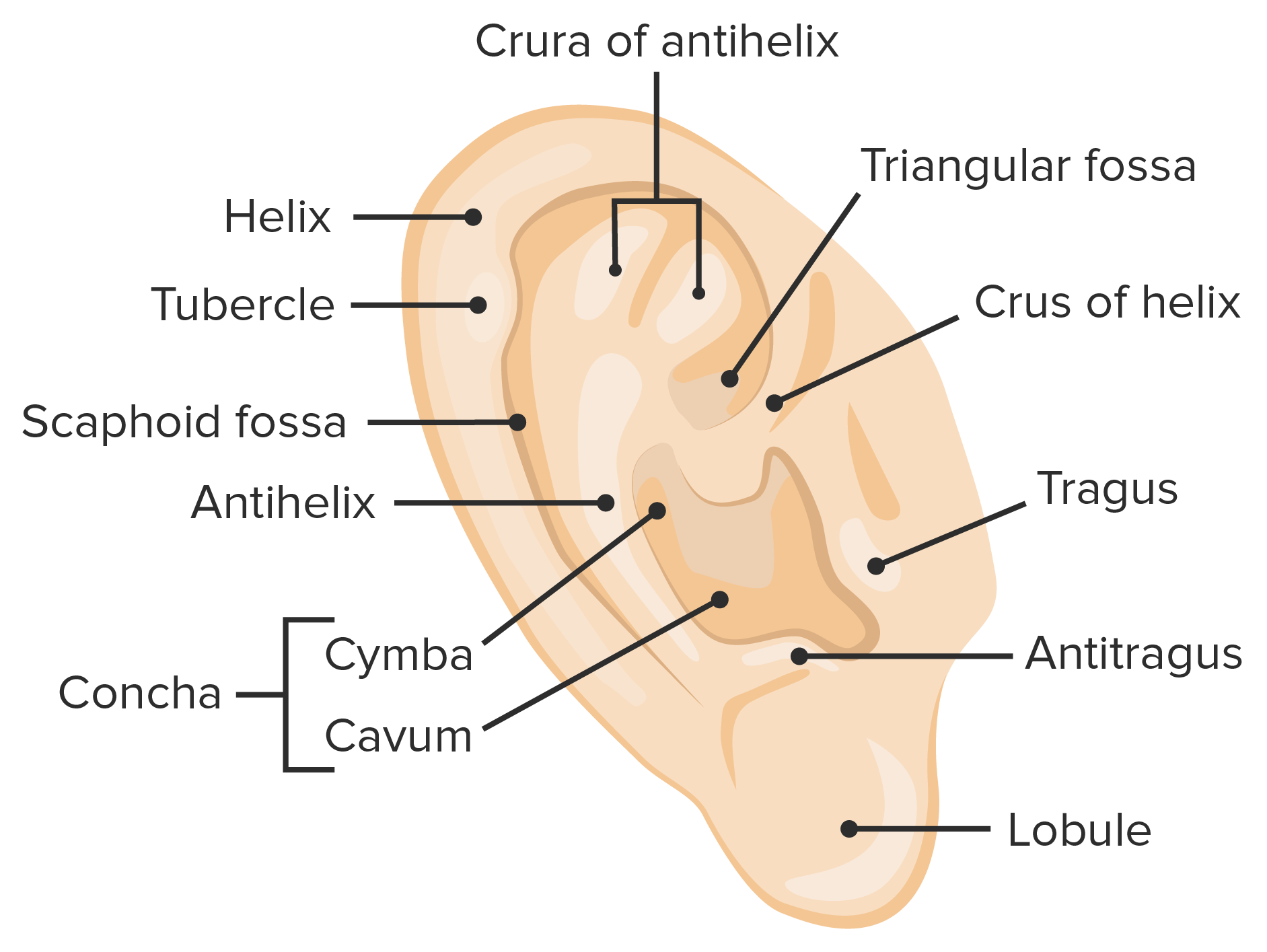Playlist
Show Playlist
Hide Playlist
Clinical Pearls – Ear
-
Slides Anatomy Ear.pdf
-
Download Lecture Overview
00:01 A couple of clinical pearls to finish out here. 00:05 First is otitis externa. 00:08 This is characterized by inflammation of the external auditory canal, so the external part of the ear which makes sense. 00:17 A bacterial infection is the most common cause of this form of inflammation, and you can have fungal overgrowth in about 10% of cases. 00:29 This is often characterized as swimmers ear because swimmers routinely will pick up infections that result in otitis externa. 00:40 There are also dermatologic causes such as atopic and contact dermatitis. 00:46 Acne can impact, affect the skin of the external acoustic meatus causing inflammation and psoriasis. 00:55 Skin disorder can also be causing some disruptions of the skin of the external meatus. 01:04 Treatment is to dry the external acoustic meatus or auditory canal and apply anti-infection eardrops. 01:15 Another type of inflammation occurs in the middle ear, this is otitis media. 01:21 This may be caused by a bacterial infection, or a virus may be the culprit. 01:27 Very common in children due to the fact that their auditory tube is more horizontally oriented, so causative infectious agents can move from the pharynx through the horizontally oriented auditory canal, and then take up residence in the middle ear. 01:49 Children also have a less mature immune system so their immune response is not as robust as it would be in adult. 01:59 Symptoms of otitis media, earache. 02:02 You can have drainage of fluid from the ear, because of the fluid accumulation in the middle ear, can have hearing trouble or difficulties. 02:11 Children usually will cry and be quite fussy, and fever is maybe associated too with the infection. 02:20 Treatment may be just a wait and see approach. 02:23 Pain medications can manage any pain associated with the middle ear infection. 02:30 And if it's bacterial, antibiotics would be utilized to treat the disorder.
About the Lecture
The lecture Clinical Pearls – Ear by Craig Canby, PhD is from the course Head and Neck Anatomy with Dr. Canby.
Included Quiz Questions
With respect to ear infections, which of the following is most accurate?
- Otitis externa is usually caused by bacteria.
- Most cases of otitis externa have fungal overgrowth.
- Adults are more susceptible to otitis media.
- Otitis media is often called “swimmers ear”.
- Otitis media is usually caused by a fungal infection.
Customer reviews
5,0 of 5 stars
| 5 Stars |
|
5 |
| 4 Stars |
|
0 |
| 3 Stars |
|
0 |
| 2 Stars |
|
0 |
| 1 Star |
|
0 |




